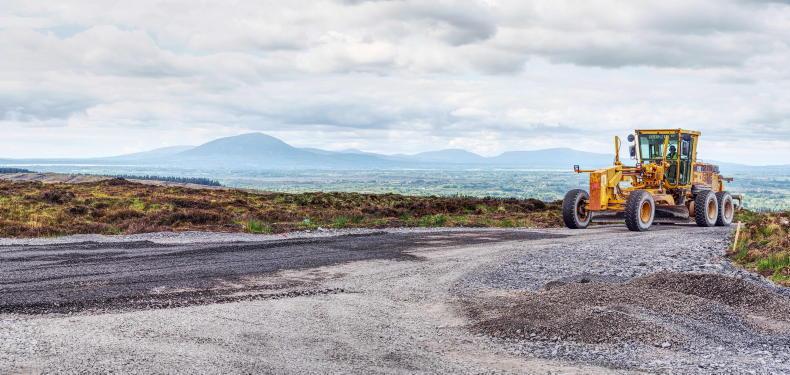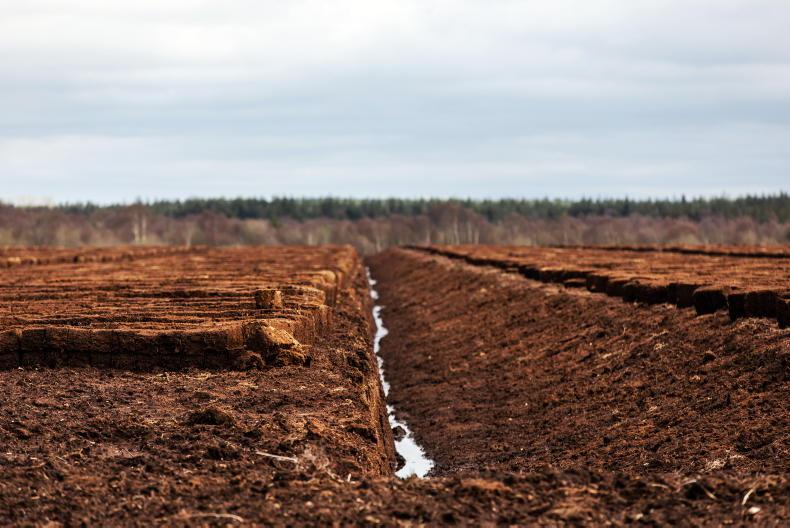Irish peatlands have been in the news a lot recently. After decades of efforts to drain and harvest our peat resources, many bogs are set to be rewetted once again.
However, many peatlands are also proving to be prime locations for onshore windfarms, given the sheer scale of the land area, their typically high wind speeds and the need to restructure the semi-state company Bord na Móna, which was once charged with extracting peat to make energy.
The long-term impact of developing windfarms on peatlands is not yet fully understood and could have serious long-term consequences if not assessed correctly, according to Nottingham Trent University researcher, Guaduneth Chico.
Recent study
A recent study by Chico, published in Scientific Reports, highlighted the risk of windfarm developments to a particular type of peatland: blanket bog.
He argues that the EU risks compromising and undermining the green-energy transition by allowing such energy developments on blanket bogs. This is a particular problem for Ireland, considering an estimated 8% of the world’s blanket bogs are found here.
Blanket bogs are a unique kind of peatland typically found in areas of high rainfall and lower temperatures.
Many blanket bogs are located in areas of high wind-energy potential, making them prime locations for windfarm developments.
Chico’s study highlighted that more than 640 wind turbines and 250km of service roadways have been developed on blanket bogs across the EU and the UK to date.
Why do peatlands matter?
Peatlands are the largest land-based carbon stores on the planet. Although they cover less than 3% of the Earth’s land surface, peatlands store twice as much carbon as all the world’s forests.

Road infrastructure, like wind turbines, can also damage bogs.
When in pristine condition, they serve as natural carbon sinks, making a substantial contribution to climate change mitigation. In Europe, only 5.2% of land is covered by peatlands; that figure is closer to 16% in Ireland.
There are two main types of bogs – blanket bogs and raised bogs. Blanket bogs are very rare and have been included in the European Red List of habitats.
While blanket bogs provide a multitude of ecosystem services, such as improving water quality, water storage and regulation, and providing a habitat for biodiversity, a significant portion of these are already in a degraded state.
The EU now class blanket bogs as “near-threatened” because of the strong decline in their quality over the last 50 years.
The threat of windfarms
Historically, blanket bogs have been damaged by peat harvesting for fuel and horticulture, forestry, overgrazing, drainage, burning and infrastructure development. However, more recently, windfarms have been highlighted as threats to blanket bogs.
Chico argues that windfarm development impact on peatland water systems, which in turn can have a significant effect on the entire ecosystem of the habitat, impacting biodiversity and causing vegetation changes.
This pressure not only affects the areas where turbines are installed, he says, but also where associated infrastructures, such as roads, tracks, and sub-stations are built.
Ireland currently has 12 out of the 36 identified blanket bogs in Europe, which contain wind farms
For example, in 2020, there was a significant incident at the Meenbog Windfarm in Donegal, where substantial peat slippage occurred, highlighting the risk of such developments.
Chico says there is also a lack of understanding regarding the long-term impacts on peatland carbon sinks and the fact that windfarms installed on non-degraded peatland would not result in a net long-term carbon benefit.
The Irish context
Ireland currently has 12 out of the 36 identified blanket bogs in Europe which contain windfarms.
The Republic of Ireland (ROI) aims to generate up to 80% of its electricity from renewable sources by 2030. As a country, we are generally supportive of onshore wind.
The importance of excluding peatlands from wind developments was highlighted in the past in a 2008 paper by UCD researcher Florence Renou-Wilson.
However, since 2008, at least 79 wind turbines have been built in the Republic or Ireland on recognised blanket bogs – the equivalent to 263MW of generation or 6.1% of the total wind energy capacity in the country, Chico’s study outlines.

Many peatlands are set to be rewetted in the Republic of Ireland.
Meanwhile, Northern Ireland presents a case of potentially underreported blanket bog habitat, indicating that the issue might be more substantial than currently understood, he says.
Chico highlights that while the development of renewable energy is a priority in order to decarbonise our energy system, building them on peatlands could ironically undermine the green energy transition.
Blanket bogs, as a particularly vulnerable habitat, deserve special attention, and further research is necessary to update national and international inventories for their protection and restoration, he concludes.
Irish peatlands have been in the news a lot recently. After decades of efforts to drain and harvest our peat resources, many bogs are set to be rewetted once again.
However, many peatlands are also proving to be prime locations for onshore windfarms, given the sheer scale of the land area, their typically high wind speeds and the need to restructure the semi-state company Bord na Móna, which was once charged with extracting peat to make energy.
The long-term impact of developing windfarms on peatlands is not yet fully understood and could have serious long-term consequences if not assessed correctly, according to Nottingham Trent University researcher, Guaduneth Chico.
Recent study
A recent study by Chico, published in Scientific Reports, highlighted the risk of windfarm developments to a particular type of peatland: blanket bog.
He argues that the EU risks compromising and undermining the green-energy transition by allowing such energy developments on blanket bogs. This is a particular problem for Ireland, considering an estimated 8% of the world’s blanket bogs are found here.
Blanket bogs are a unique kind of peatland typically found in areas of high rainfall and lower temperatures.
Many blanket bogs are located in areas of high wind-energy potential, making them prime locations for windfarm developments.
Chico’s study highlighted that more than 640 wind turbines and 250km of service roadways have been developed on blanket bogs across the EU and the UK to date.
Why do peatlands matter?
Peatlands are the largest land-based carbon stores on the planet. Although they cover less than 3% of the Earth’s land surface, peatlands store twice as much carbon as all the world’s forests.

Road infrastructure, like wind turbines, can also damage bogs.
When in pristine condition, they serve as natural carbon sinks, making a substantial contribution to climate change mitigation. In Europe, only 5.2% of land is covered by peatlands; that figure is closer to 16% in Ireland.
There are two main types of bogs – blanket bogs and raised bogs. Blanket bogs are very rare and have been included in the European Red List of habitats.
While blanket bogs provide a multitude of ecosystem services, such as improving water quality, water storage and regulation, and providing a habitat for biodiversity, a significant portion of these are already in a degraded state.
The EU now class blanket bogs as “near-threatened” because of the strong decline in their quality over the last 50 years.
The threat of windfarms
Historically, blanket bogs have been damaged by peat harvesting for fuel and horticulture, forestry, overgrazing, drainage, burning and infrastructure development. However, more recently, windfarms have been highlighted as threats to blanket bogs.
Chico argues that windfarm development impact on peatland water systems, which in turn can have a significant effect on the entire ecosystem of the habitat, impacting biodiversity and causing vegetation changes.
This pressure not only affects the areas where turbines are installed, he says, but also where associated infrastructures, such as roads, tracks, and sub-stations are built.
Ireland currently has 12 out of the 36 identified blanket bogs in Europe, which contain wind farms
For example, in 2020, there was a significant incident at the Meenbog Windfarm in Donegal, where substantial peat slippage occurred, highlighting the risk of such developments.
Chico says there is also a lack of understanding regarding the long-term impacts on peatland carbon sinks and the fact that windfarms installed on non-degraded peatland would not result in a net long-term carbon benefit.
The Irish context
Ireland currently has 12 out of the 36 identified blanket bogs in Europe which contain windfarms.
The Republic of Ireland (ROI) aims to generate up to 80% of its electricity from renewable sources by 2030. As a country, we are generally supportive of onshore wind.
The importance of excluding peatlands from wind developments was highlighted in the past in a 2008 paper by UCD researcher Florence Renou-Wilson.
However, since 2008, at least 79 wind turbines have been built in the Republic or Ireland on recognised blanket bogs – the equivalent to 263MW of generation or 6.1% of the total wind energy capacity in the country, Chico’s study outlines.

Many peatlands are set to be rewetted in the Republic of Ireland.
Meanwhile, Northern Ireland presents a case of potentially underreported blanket bog habitat, indicating that the issue might be more substantial than currently understood, he says.
Chico highlights that while the development of renewable energy is a priority in order to decarbonise our energy system, building them on peatlands could ironically undermine the green energy transition.
Blanket bogs, as a particularly vulnerable habitat, deserve special attention, and further research is necessary to update national and international inventories for their protection and restoration, he concludes.









 This is a subscriber-only article
This is a subscriber-only article










SHARING OPTIONS: